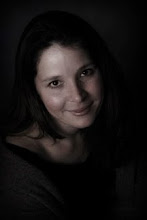Robert Bateman, Canada
Antarctic Evening – Humpback Whales
I'm still needing art. And I think it's interesting -- at a time when there is so much money being generated by and for oil in this country alone -- that there is no money for the arts. Some of this is a philosophical issue of what we choose as our values and what is important -- other is just logistics. Artists can't afford to do their work and live in this culture. In talking about funding for the arts -- and I include poetry and performance in this term -- we have to look at the role and purpose in art. Politics? Entertainment? Meaning? If we starve the arts what conversations do we end...
Yesterday, Andrew C. Revkin of the New York Times bemoaned the lack of initiative in this country. Hard to imagine I could possible be more cynical than a New York Times reporter, but really -- we don't even back the UN...
Following the environmental tenants of that organization is this statement:
Internationally co-ordinated work on the environment has been led by the United Nations Environment Programme (UNEP), since its inception in 1973. UNEP has provided leadership and encouraged partnerships to care for the environment, for example, through Multilateral Environmental Agreements (MEAs) which have addressed issues such as species loss and the need for conservation at a global and regional level. UNEP has created much of the international environmental law in use today.
The three environmental principles of the Global Compact are drawn from a Declaration of Principles and an International Action Plan (Agenda 21) that emerged from the United Nations Conference on Environment and Development (the Earth Summit) held in Rio de Janerio in 1992. Chapter 30 of Agenda 21, identified that the policies and operations of business and industry can play a major role in reducing impacts on resource use and the environment. In particular, business can contribute through the promotion of cleaner production and responsible entrepreneurship.
The UN is a supporter of the arts in this endeavor."Science informs the mind, music and the heart but art connects with the human spirit," said Achim Steiner, Under Secretary-General of the United Nations and Executive Director of UNEP.
I love that. The human condition, right -- great art explores the human condition. Maybe that is part of what makes this particular topic so compelling, and so easy to integrate in terms of aesthetics and politics in a way that doesn't alienate one from the other -- demise is not foreign to the soul at all...
Steiner goes on to say: "We urgently need to empower all three of these essential human elements if we are to rise to the challenge and seize the opportunities for economic, environmental and social renewal glimpsed through the lens of climate change."
25% of the worlds oil reserves are believed to reside in the Arctic.
The icebergs are melting at a rate that far exceeds all expectations.
For UN World Environment Day 2007, the Natural World Museum in partnership with the United Nations Environment Programme produced an exhibition that addresses the theme of Climate Change from a global perspective - the melting and thawing of ice, snow and permafrost are environment-altering changes taking place around the world- from the Andes to the Himalayas to the melting ice caps of the Poles. "Change" the transition that occurs from same to different, the moment of transformation, a change of position or action. Change used in reference to our environment can describe the transformation of material substance -- from ice to water, liquid to gas - the changing conditions of our rivers, our rapidly melting glaciers,, and the overall changes in the earth's climate. Change requires organisms and organizations alike to adapt to new environmental conditions. Metaphorically, change can also refer to the transformation of society's mindset to act in a positive way individually and collectively to work toward a more sustainable future.
Press release from the Natural World Museum.
The Exhibit will be at the Field Museum in Chicago from April to October of this year.
I want to go.








No comments:
Post a Comment